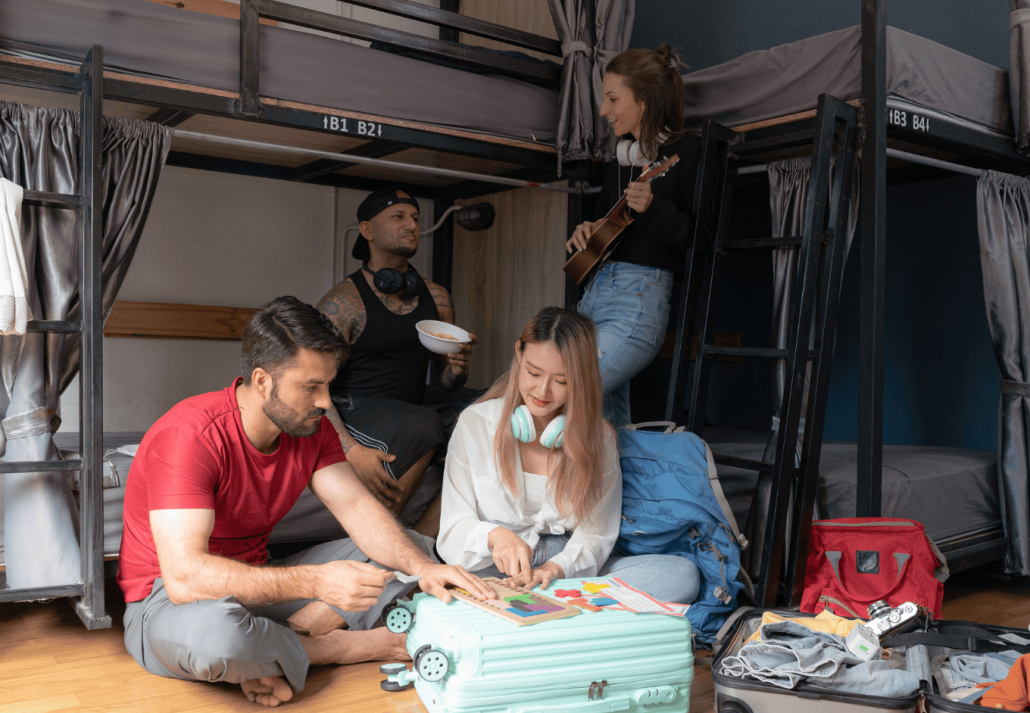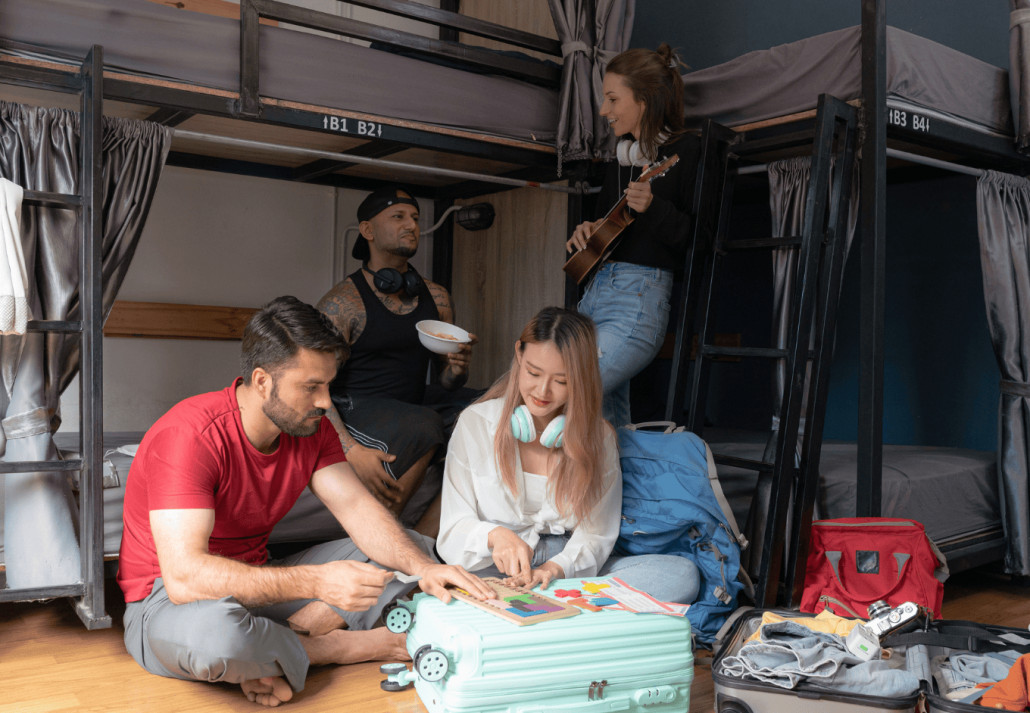
Picture this: You’re sipping a crisp Vinho Verde in a Porto garden, hiking between ancient ruins on Crete, and dancing till dawn at a Berlin techno club—all without your bank account having a full-blown meltdown. Sound impossible? Plot twist: it’s totally doable, and we’re about to spill all the tea on how to travel Europe on a budget like an absolute pro. Here’s a local guide on how to travel Europe on a budget.
Forget everything you think you know about European travel being exclusively for the rich. This guide is packed with real, actionable tips, hidden-hack secrets, and itinerary-smart strategies that will turn your dream trip into a stunning and surprisingly affordable reality. Let’s dive in.
Europe Budget Travel Guide – CuddlyNest
| Budget Category | Key Strategy | Pro-Tip & CuddlyNest Hack |
|---|---|---|
| Getting There | Book flights 2-3 months early & be flexible with dates/airports | Start your trip in a cheaper hub like Lisbon or Krakow to maximize savings from the beginning |
| Accommodation | Choose hostels, guesthouses, or vacation rentals over hotels | Use CuddlyNest to find affordable apartments with kitchen facilities. Code: DISCCN15 for 15% off your stay |
| Getting Around | Use budget buses (FlixBus) & trains; compare Eurail vs point-to-point tickets | For unique routes and local experiences, try the ride-sharing app BlaBlaCar |
| Eating & Drinking | Picnic from markets, eat fixed-price lunches, and avoid tourist traps | Carry a reusable water bottle and ask for free tap water at restaurants to save on beverage costs |
| Attractions | Take free walking tours, visit museums on free days, and simply wander | Research city tourism cards in advance—calculate if they’ll save you money based on your planned itinerary |
Pro Tip: Book longer stays on CuddlyNest for additional weekly or monthly discounts
Why Europe Is Actually Perfect For Budget Travelers
Let’s be real: we have all scrolled through Instagram pics of a Venetian gondola or a Parisian café and thought, “Maybe one day when I’m rich.” It is easy to assume that “Europe” and “budget travel” do not exactly go together like peanut butter and jelly.
But here is the plot twist you need to hear: Europe is secretly designed for budget travellers.
Think about it: the continent is woven together by an incredible train network, riddled with budget airlines that make flying cheaper than a train ticket, and packed with hostels that feel more like social clubs than just cheap crash pads. It has a tourism infrastructure built over decades that makes navigating efficient and affordable, if you know how to use it.

This is not about just “getting by.” This is about thriving. You can legitimately live the European dream, exploring major European cities, eating unforgettable food, and walking through UNESCO World Heritage Sites, all while keeping your daily spending under $60.
The rest of this guide is not just a list of tips. It is your blueprint for hacking the European system to have the trip of a lifetime without the financial hangover. Let us get into the good stuff.
Getting There: How to Score The Cheapest Flights to Europe
The Golden Rule: Book Early
For the best deals, you need to plan ahead. The sweet spot is typically 2-3 months in advance, or even earlier for peak summer travel.
Airlines That Won’t Break The Bank
Your go-to list for cheap airlines within and to Europe:
- Ryanair & EasyJet: The undisputed kings of intra-European travel. Read the fine print on bag fees!
- Wizz Air: Your best bet for fantastic deals across Eastern Europe.
- Norwegian Air: A top choice for more affordable transatlantic flights.
- FlixBus: Not an airline, but don’t sleep on these incredibly cheap buses for cross-border travel.
Pro Hacks for the Savvy Traveler
- Embrace Smaller Airports: Fly into “London” Stansted instead of Heathrow, or “Paris” Beauvais instead of Charles de Gaulle. The bus/train into the city is often worth the massive savings.
- Be Flexi-ble with Your Dates: Use the “flexible dates” search feature on Google Flights or Skyscanner. Shifting your trip by a day or two can save you hundreds.
- Start in a Cheaper Hub & Get Comfy: Consider flying into a budget-friendly gateway like Lisbon, Porto, Krakow, or Budapest. Once you land, book a stay on CuddlyNest to find a cozy, affordable apartment or guesthouse for your first few nights. It’s the perfect home-base to plan the next leg of your trip. Pro Tip: Use the code DISCCN15 to get an instant 15% discount on your booking!
Sleeping Smart: Your Guide to Affordable & Awesome Stays
Your accommodation is where you can save the most money—or blow your budget entirely. Forget expensive hotels; Europe is a playground for affordable and social lodging.
Budget Accommodation Options, Decoded:
Hostels: Social & Super Affordable
Budget Guesthouses & B&Bs: Cheap & Cheerful Privacy
- Ibis Budget / Etap Hotel: Consistently basic, clean, and wallet-friendly rooms across the continent.
- Premier Inn (UK): The UK’s dependable, family-friendly budget hotel chains.
Vacation Rentals & Apartments: Your Home on the Road
- CuddlyNest: Find unique apartments and guesthouses, perfect for saving money with your own kitchen.
Boutique Hostels: Style on a Budget
- The Jo&Joe: A stylish hybrid with a bar and social vibe in Paris and Budapest.
- Palmers Lodge (London): A unique hostel experience in a beautiful, historic building.
Why Choosing the Right Platform Matters:
For a curated selection of the best budget stays, CuddlyNest is your go-to. It’s designed to help you find cozy, affordable apartments and unique guesthouses that offer better value.
Pro Hacks for Cheap Stays:
- Stay Slightly Outside the Center: A short metro ride can cut your accommodation cost in half.
- Book Longer Stays: Many CuddlyNest hosts offer significant weekly or monthly discounts.
- Use Your Discount: Get an instant 15% discount on your CuddlyNest booking with the code DISCCN15.
Getting Around Europe for Less
Think getting around Europe is expensive? Think again. The continent is connected by an incredibly efficient web of budget-friendly public transport.
- Train Travel: To Pass or Not to Pass?
- Eurail Pass: Best for travelers who want ultimate flexibility and plan on several long-distance trips in a short time. Do the math—it’s not always cheaper.
- Point-to-Point Tickets: Often the winner for specific, pre-planned routes. Book in advance on national railway sites (like Deutsche Bahn in Germany or Trenitalia in Italy) for the best “Saver Fares.”
- Bus Travel: The Budget Champion
- FlixBus: The green giant of European bus travel, with an extensive network and rock-bottom prices.
- RegioJet: A fantastic choice in Central Europe, known for its comfortable seats and free coffee.
- Ride-Sharing: Travel Like a Local
- BlaBlaCar: The leading app for booking a seat in someone’s car. It’s often faster than a bus and cheaper than a train, plus you get a unique local experience.

Eating & Drinking Like a Local (Without the Price Tag)
The food is a highlight, but your meals don’t have to devour your budget.
- Embrace the Market: Have a picnic! Grab bread, cheese, and produce from a local market like La Boqueria in Barcelona or Naschmarkt in Vienna. It’s cheap, delicious, and an experience in itself.
- Lunch is the New Dinner: Seek out the fixed-price “Menu del Día” (Spain) or “Plat du Jour” (France). For €10-€15, you’ll get a multi-course meal that would cost double at dinner.
- Avoid Tourist Traps: If the menu has more pictures than text and is in five languages, walk away. Eat where the locals are—just one street back from the main square.
- Tap Water is Your Friend: In most Western European countries, tap water is safe to drink. Politely ask for “tap water” (or “eau du robinet,” “acqua del rubinetto”) to avoid paying €4 for bottled water.
- BYOB (Bring Your Own Bottle): A reusable water bottle is a budget and eco-travel must. Refill it for free at your accommodation or public fountains.

Free & Cheap Attractions: Culture Without the Cost
Some of the best things in Europe are, thankfully, free (or very cheap).
- Free Walking Tours: Start your visit with a “free” (tip-based) walking tour from companies like Sandeman’s. It’s the perfect way to get your bearings and learn the history.
- Museum Free Days: Almost every major museum has a free day. The Louvre is free on the first Saturday of the month after 6 pm, and many London museums, like the British Museum, are always free!
- City Tourism Cards: Do the math! If your itinerary is packed, cards like the Berlin WelcomeCard or Lisboa Card can save you a bundle on transit and entry fees.
- Simply Wander: Get lost! Exploring neighbourhoods like Trastevere in Rome, Christianshavn in Copenhagen, or the Jewish Quarter in Krakow costs nothing and will be a highlight of your trip.

Sample Budget Itinerary: The $60/Day Proof
Let’s make it real. This 10-day Eastern European adventure proves you can experience incredible history, delicious food, and culture on a tight budget.
The Route: Krakow (3 days) -> Budapest (3 days) -> Belgrade (4 days)
Daily Budget Breakdown:
- Accommodation: $25 (A mix of a CuddlyNest apartment in Krakow, a hostel in Budapest, and a guesthouse in Belgrade).
- Food & Drink: $20 (Pastry & coffee for breakfast, street food or market picnic for lunch, and a affordable local meal for dinner).
- Attractions/Transport: $15 (One paid attraction, local transit pass, and a contribution to your inter-city travel fund).
- Total: $60/Day
How to Book Your Stays:
Ready to lock in your stays? Find the perfect, budget-friendly bases for this entire itinerary on CuddlyNest. From a cozy apartment in Krakow’s Old Town to a social hostel in Budapest, your affordable home-away-from-home is just a click away. All that’s left is for you to book that flight and pack your bags.
FAQs For How to Travel Europe on a Budget
1. Is $60 a day really enough for Western Europe like France or Italy?
While more challenging, it’s possible with strategic choices. Focus on cheaper regions (like Portugal instead of Switzerland), prioritize Eastern European hubs for most of your trip, and be strict about using all the budget hacks in this guide, especially for accommodation and food.
2. How much money should I have in savings as a safety net?
Always have a backup fund! Aim for an extra $200-$300 beyond your calculated budget for emergencies, spontaneous opportunities, or unexpected costs like baggage fees or a last-minute train ticket.
3. What’s the best way to handle money and avoid bank fees?
Get a debit card from a bank that reimburses ATM fees and has low foreign transaction fees. Also, a credit card with no foreign transaction fees is perfect for larger purchases. Always pay in the local currency when given the option.
4. Is it safe to stay in hostels or use ride-sharing apps like BlaBlaCar?
Generally, yes. For hostels, always read recent reviews, check security features (like lockers), and opt for larger, well-rated chains. For BlaBlaCar, choose drivers with many verified trips and high ratings, and always let someone know your travel plans.
Explore More in Europe
Please visit:
Our Sponsor
